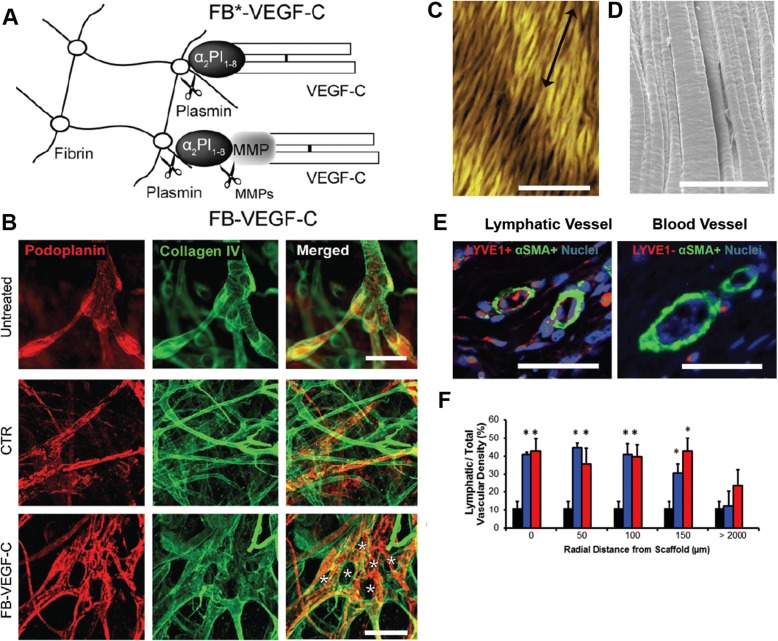Fig. 6.
. (a) Engineered fibrin-binding variant of vascular endothelial growth factor C (FB-VEGF-C) that is slowly released upon demand by infiltrating cells. VEGF-C release is enabled by plasmin cleavage of fibrin or MMP cleavage of the additional MMP substrate peptide fused between the α2-PI1-8. (b) Confocal images of untreated dorsal ear dermis and 21 days after treatment with the fibrin gel (CTR) or FB-VEGF-C. Images show podoplanin (red), collagen IV (green) staining. Star indicates pillar formation on the FB-VEGF-C group. Scale bars are 50 μm. Illustration in panel A and B was adapted with permission from [244]. BioBridge, alligned nanofibrillar collagen scaffolds characterized using (c) atomic force microscopy (scale bar is 50 μm) and (d) scanning electron microscopy (scale bar is 20 μm). (e) At 3 months after implantation in a porcine model of acquired lymphedema, BioBridge and VEGF-C treated group show lymphatic and blood vasculatures. Scale bars are 50 μm. (f) Lymphatic fraction of total (blood + lymphatic) vascular density in percent (n>3), *p<0.05 versus untreated irradiated tissue (control group). Illustration in panel C-F was adapted with permission from [245]

